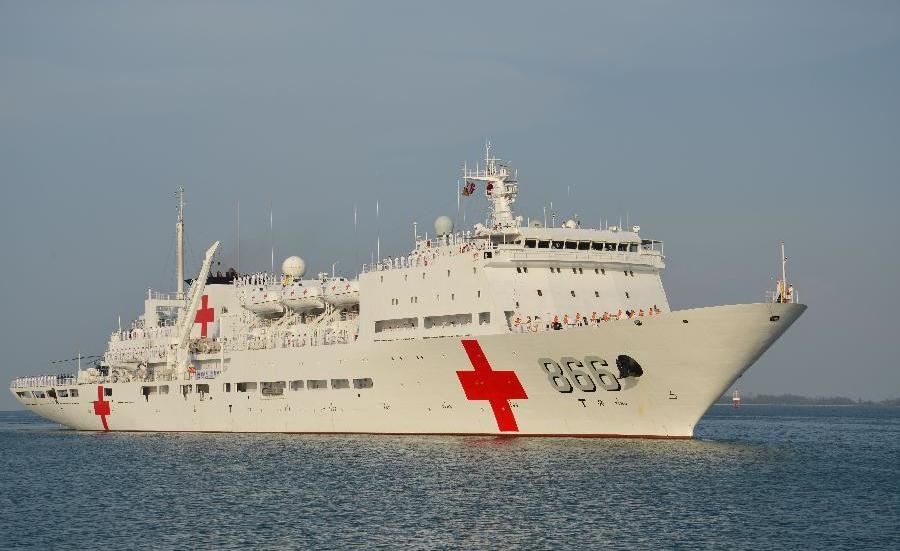
ONBOARD HOSPITAL SHIP PEACE ARK — In 2012, Secretary of the Navy Ray Mabus visited the People’s Republic of China for talks with China’s defense ministry. During the visit, Mabus invited the People’s Liberation Army Navy (PLAN) to the 2014 Rim of the Pacific (RIMPAC) exercises. Held every other year in Hawaii since 1971, RIMPAC is the world’s largest naval exercise, with 22 nations participating in 2012.
China accepted the invitation, and on June 9th sent four ships, the destroyer Haikou, frigate Yueyang, replenishment ship Qiandaohu, and hospital ship Peace Ark to Hawaii. The 4,915 mile voyage took two weeks, and the Chinese fleet arrived in Pearl Harbor on June 24th.
USNI News was given a tour of Peace Ark by the officer in charge of the medical complement, Senior Captain Sun Tao. A gastroenterologist by training, Tao is currently vice commandant of the Beijing Military Hospital. Tao’s command of the English language was quite good, although in a later sit-down session with USNI he made use of a translator so he could concentrate on answering questions.
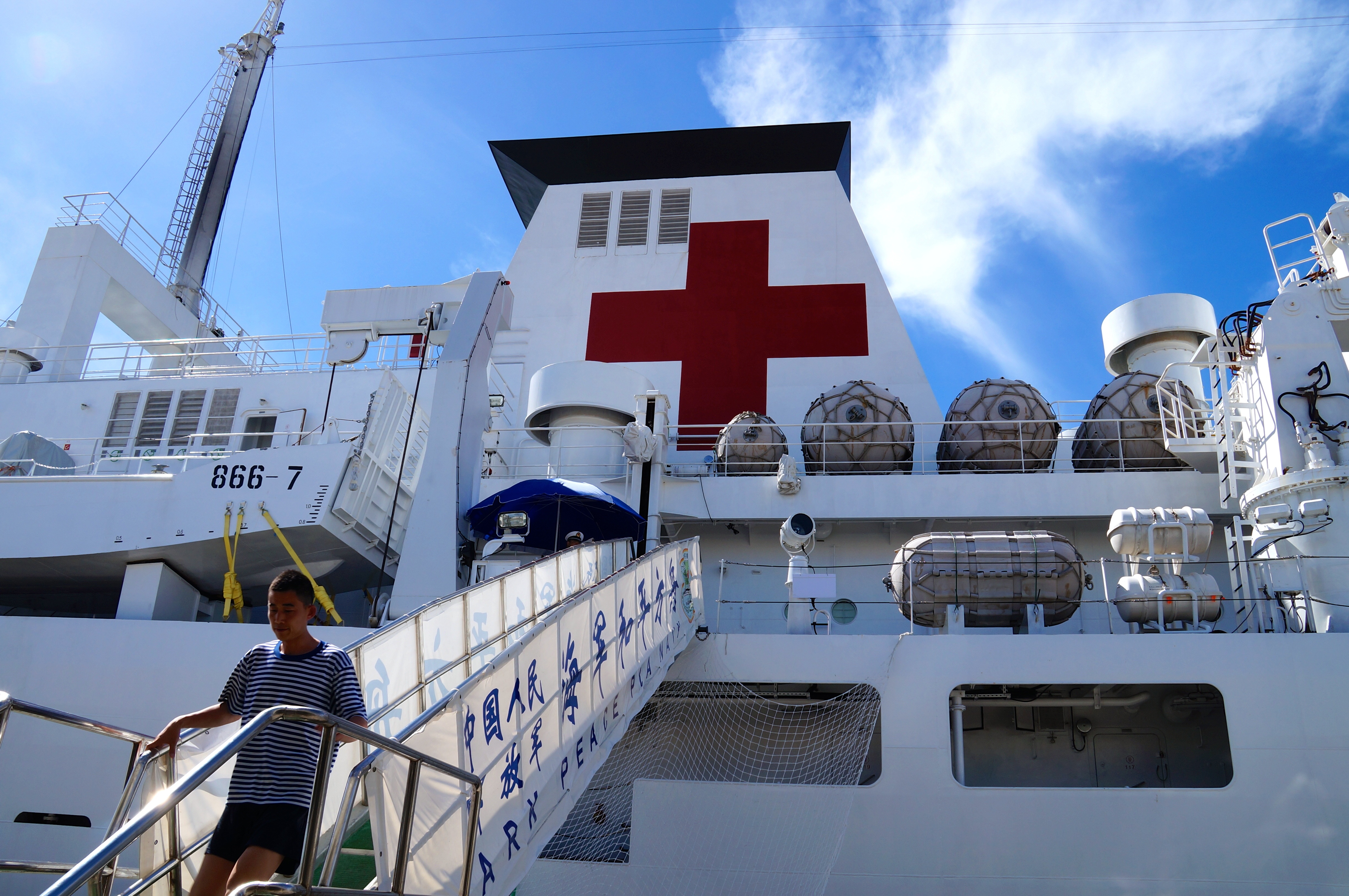
Peace Ark, formally known as Daishandao, is a purpose-built hospital ship of the Type 920 class. It is the only ship in the Type 920 class, and although China has other, older hospital ships, it does not seem to deploy them and they may no longer be in service. The ship was built by Guangzhou Shipyard International Company Limited and commissioned in December 2008.
Peace Ark is a large ship, 583 feet long and displacing at least 10,000 tons fully loaded. The ship is based with the South Sea Fleet at Zhoushan, in Zhejiang province. While not underway, the ship normally has a crew of 113 and a medical complement of 20; on deployment those number increase to roughly 328 crew and 100 medical personnel. The medical complement is task organized given the nature of the situation (disaster, wartime, training, etc.)
Senior Capt. Sun Tao described the mission of his hospital ship. “Peace Ark is designed rescue and treat the wounded and sick at sea during wartime,”he said through an interpreter.
”She conducts medical services during peacetime, as well as humanitarian assistance operations. She also acts as a platform for medical staff to conduct research and training.”
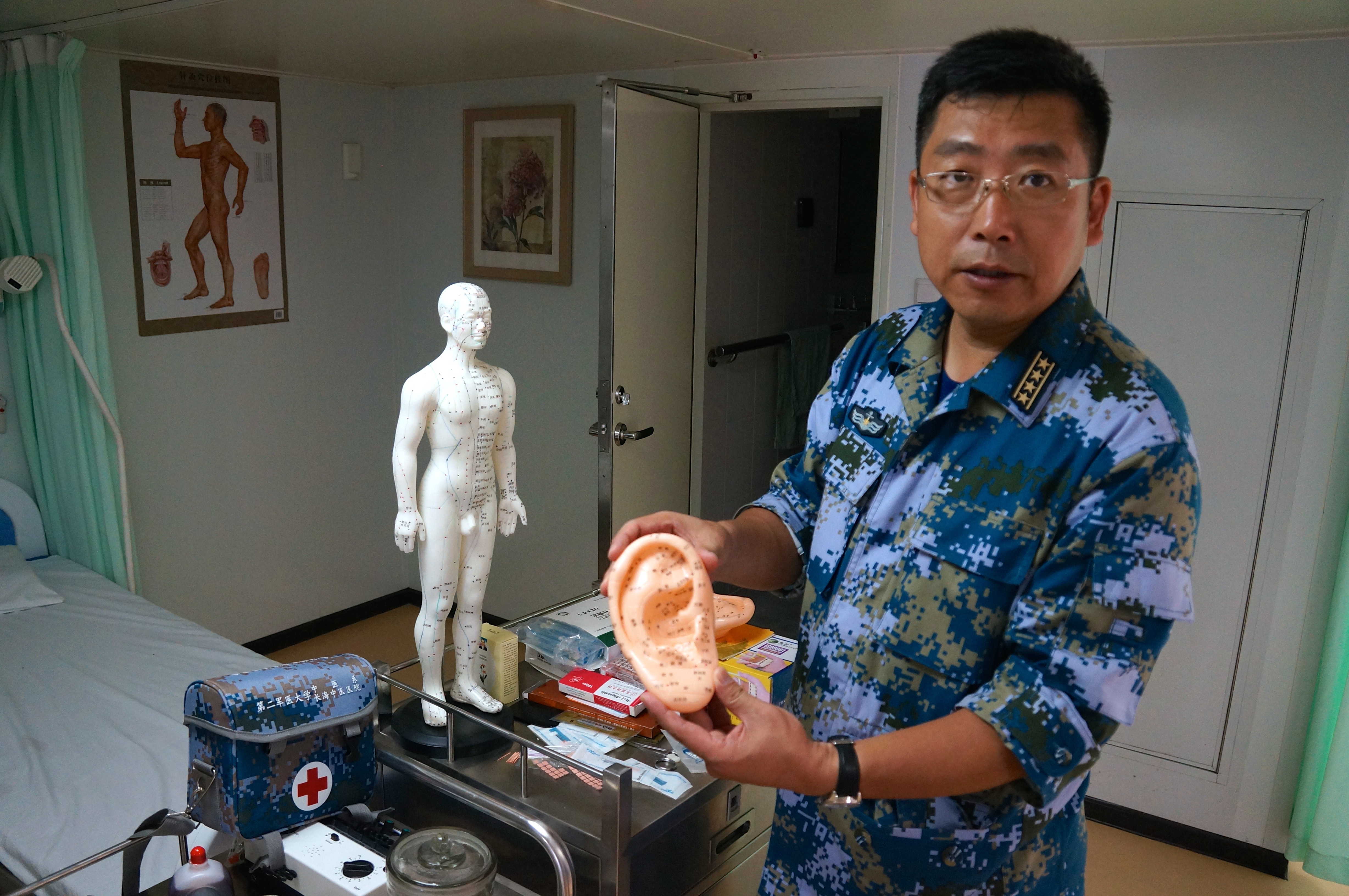
China has sent Peace Ark on several humanitarian assistance/disaster relief missions. In 2009, Peace Ark travelled down China’s coastline providing medical services to locals and PLA troops stationed on islands. In 2010, in the first overseas deployment of a Chinese hospital ship, Peace Ark was sent to Djibouti, Kenya, Tanzania, Seychelles, and Bangladesh to provide medical treatment to residents. In late 2011, Peace Ark traveled through the Carribean and South America, visiting Cuba, Jamaica, Trinidad and Tobago and Costa Rica. In 2013, the ship was sent to the Philippines to provide medical care in the wake of Super Typhoon Haiyan.
Peace Ark has three ways to get patients onboard. Patients arrive by helicopter—the ship carries a Z-9 “heli-ambulance” assigned, with a landing pad and hangar located on the stern. It can also receive patients by boat and hangar basket.
The ship is laid out to quickly receive and treat patients. A walk up the starboard gangway leads to one of Peace Ark’s two triage areas. There, patients are divided according to conditions for treatment. Next, patients are loaded onto wide, hospital-style elevators that can accept up to two gurneys for transport to the medical decks.

The ship has 8 operating theaters that can perform up to 40 major surgeries a day. It has a further 20 intensive care unit beds, and 300 regular hospital beds. Much of the equipment, particularly multi-function displays at critical care bedsides, appears to be of foreign origin, particularly Koninklijke Philips N.V., the Dutch medical equipment manufacturer.
Peace Ark also has extensive diagnostic and examination facilities, with an x-ray room, an ultrasound room and a C-T scanner. There is an examination room used for examining clinical specimens. The ship has a gynecological examination room, which Senior Captain Tao explained was useful during humanitarian missions.
The ship has a wide variety of medical capabilities. Peace Ark is equipped to treat patients who have been exposed to the elements, such as sailors or airmen recovered from the sea, with a hypothermic resuscitation bag. The device resembles a sleeping bag and is used to treat individuals diagnosed with hypothermia. It is equipped with a Chinese-made hemodialysis unit, the TL-219, advertised by the PLAN as the first in the world capable of blood purification on ships and vehicles and in disaster zones.
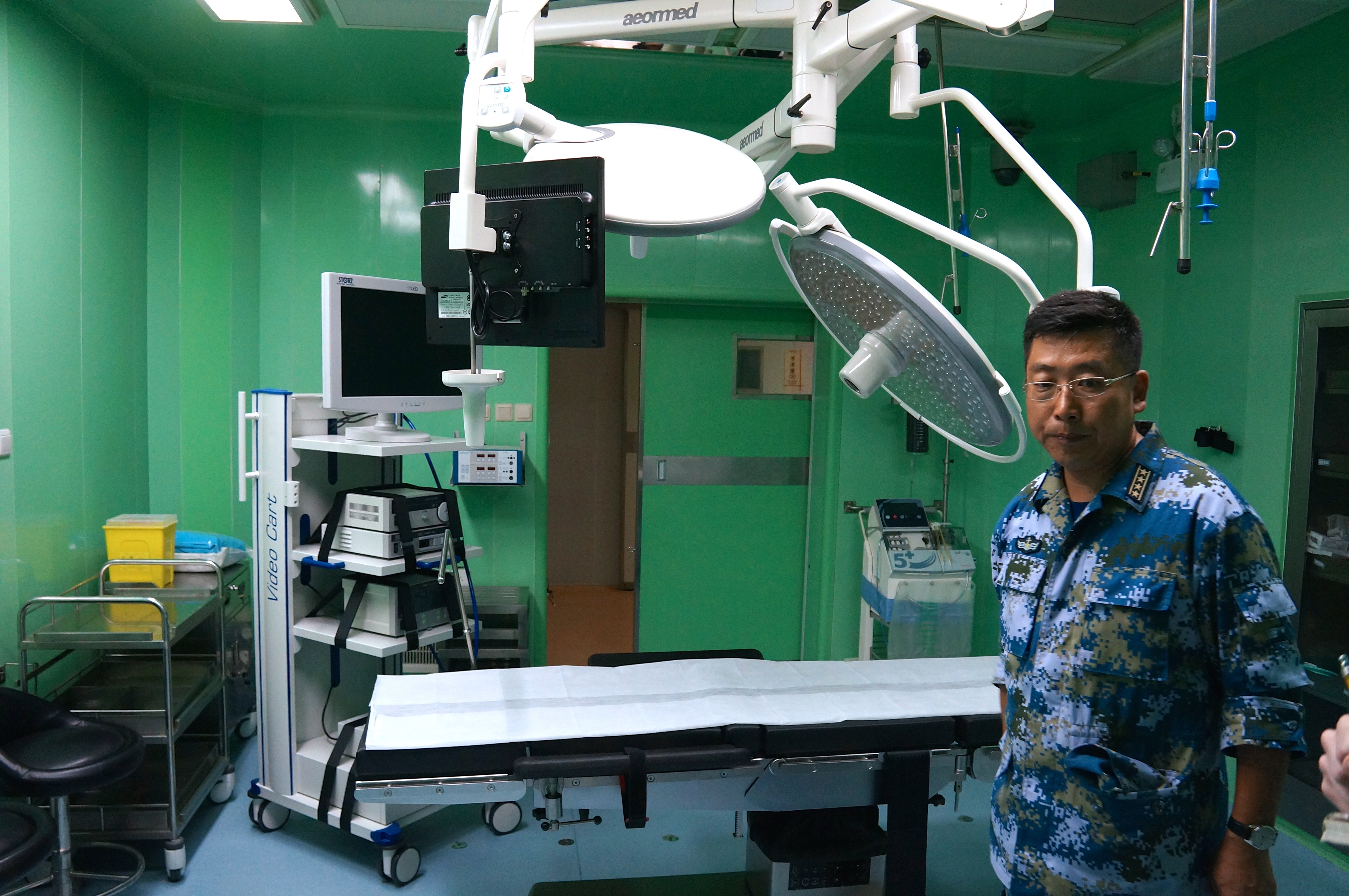
“Other than internal organ transplant,”Tao said, “or any kind of heart disease treatment, [Peace Ark] can pretty much do any kind of treatment.”This includes, perhaps not surprisingly, traditional Chinese medicine. A room onboard Peace Ark is specifically reserved for the ancient therapies of cupping, massage, and acupuncture.
The ship has impressive networking and communications capabilities. Doctors can monitor patients remotely, bringing up data such as vital signs at their workstations. From the administration room, doctors can teleconference with other doctors and specialists at the Naval General Hospital in Beijing and the 2nd Army Medical Hospital in Shanghai.
Being a hospital ship, Peace Ark’s medical services decks are not built to warship standards. The decks resembled hospitals more than naval vessels, with wide doorways and smooth floors to accommodate gurneys and wheelchairs. In case it is necessary to abandon ship, the ship is equipped with specially designed lifeboats, each capable of accommodating 18 stretchers or 24 ambulatory patients.
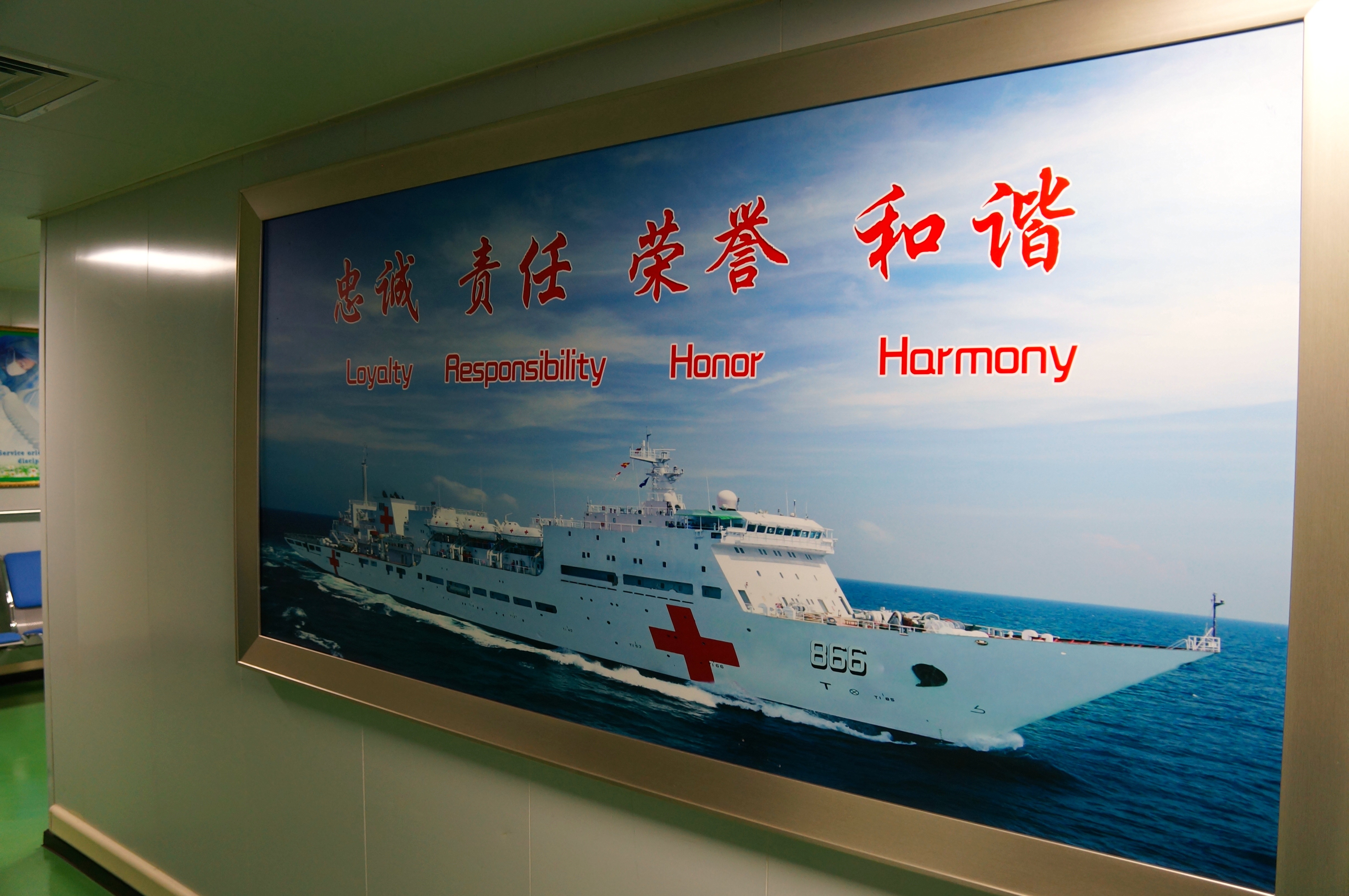
Almost all signage in the medical section were fully bilingual, in both Chinese and English. Like other hospital ships Peace Ark is unarmed, and no active or passive defenses were observed aboard the ship. The ship does have small arms for guard duty and self-defense—a guard was posted at the top of the gangway armed with a QBZ-95 assault rifle.
According to Tao, Peace Ark had three major tasks for RIMPAC. First, the plan was to hold academic exchanges with medical staff from other countries, and conduct symposiums on the field of medicine. Second, the Chinese would hold exercises with foreign medical staffs. Third, starting July 15th, there would be related exercises for which Peace Ark would put to sea. As for RIMPAC so far Senior Captain Tao said, “So far, so good.”
Peace Ark was placed under U.S. Coast Guard Command for the operational parts of RIMPAC, and was expected to exercise with forces from Canada, Norway, Singapore, Australia and the Philippines. The Chinese fleet will return to China on Aug. 4.





